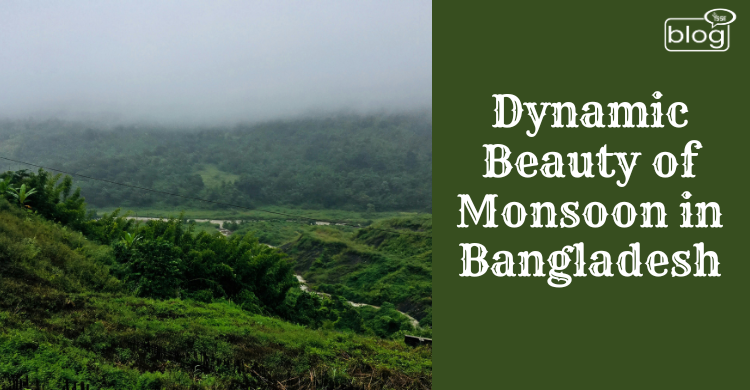Bangladesh is an amazing country with its seasonal changes and abundant natural beauty. Although the geography of Bangladesh indicates six seasons, the climate and other changes make Bangladesh have predominantly three seasons: summer, monsoon, and winter. The attached emotions and sentiments towards this prevailing cycle are intricate in the livelihood of Bangladeshi people. The dynamics in our agriculture, our lands, our climate, and our weather are shaped by the monsoon of Bangladesh.
Monsoon in Bangladesh
Generally, the monsoons appear in June and last until October in Bangladesh. The monsoon occurs due to humid air coming from the south of Bangladesh. In the south, we have the Bay of Bengal, from where the bulk of humid air comes to the mainland of Bangladesh, and thus we get the monsoon. Bangladesh’s weather is subjected to heavy rainfall and sometimes storm surges during this season. Monsoon season in Bangladesh is responsible for an average rainfall between 1200mm to 3,000mm. The average temperature in Bangladesh during the monsoon varies from 25°C to 30°C.
Dynamic Beauty of Monsoon
During monsoon, a unique aspect of Bangladesh’s beauty is preserved. As Bangladesh is a riverine country, all the rivers are filled with monsoon rainwater. The rivers become indescribably beautiful during the rainy season. Other waterbodies like haors, bells, and swamps showcase their most beautiful sites during this season. The rain-drenched rural areas are worth enjoying. The farmers planting rice in paddy fields is a treat to a wanderer’s eyes. The beauty of rural monsoons has inspired many writers to create poetry and novels. During the monsoon, the vegetation cover also becomes more lively and green. The greenery is a peace to the eyes.
Diverse Effects of Monsoon
Bangladesh being a land of rivers, and monsoon comes as a blessing to the country. The rainwater fills the rivers from upstream. And while coming down to the downstream lands, the river water carries a huge amount of silt. This silt is essential to making our cultivation land fertile. On the other hand, recurring floods and storm surges hamper people’s livelihoods when they live near rivers and water bodies. Urban areas suffer a lot during the monsoon season. The roads are subjected to waterlogging. The drainage system is so poor that the roads stay underwater for days.
Is monsoon in Bangladesh a curse or blessing?
Agriculture is the spine of our economy, so rainwater and monsoon season are blessings to us. The rainwater helps replenish the aquifer and is then utilized for agricultural purposes, among other things. Again, Bangladesh is located in the Brahmaputra-Ganga-Meghna delta, and over 50 percent of the territory of Bangladesh consists of river-borne silt. The silt that flooding rivers carry has its source in rainfall and more so in the monsoons. Monsoon rainwater also washes away the pollution in the soil, and the rainy season also helps in controlling air pollution in urban areas. Rainwater also helps revive the vegetation.
On the other hand, due to the changing climate, the monsoon season is not on time. Either it is occurring earlier or later. And for such a situation, the rainy season is longer in some regions and shorter in some regions. This is causing recurring floods, storm surges, and heavy rainfall in some areas, and other places are suffering from drought. A huge number of people lose their homes and work during monsoons due to heavy rainfall and floods. Urban areas are not also free from this. The roads and the drainage systems are highly damaged due to rainfall.
Whether we take monsoon as a blessing or a curse, it is essential to our country’s ecosystem, agriculture, and lands. And it is also a part of the beauty of our riverine country.
To read these types of blogs, click here
Writer,
Zabin Tasmin
Intern,
Content Writing Department,
YSSE.

